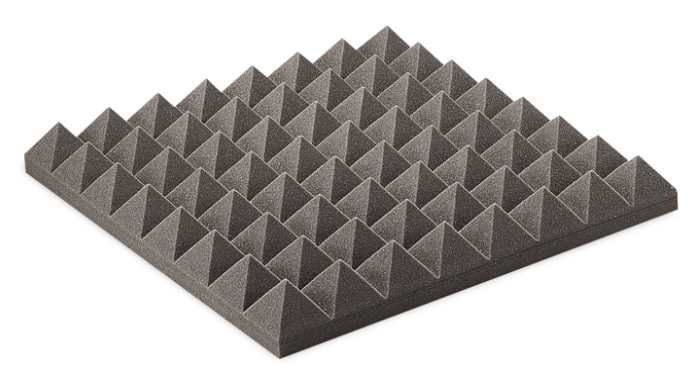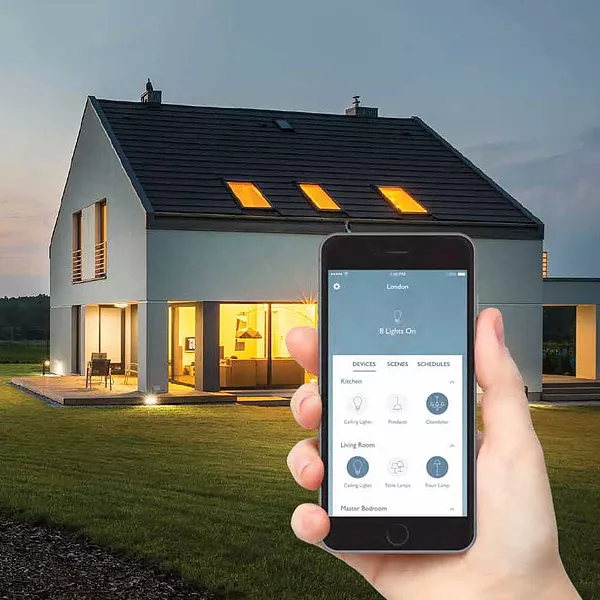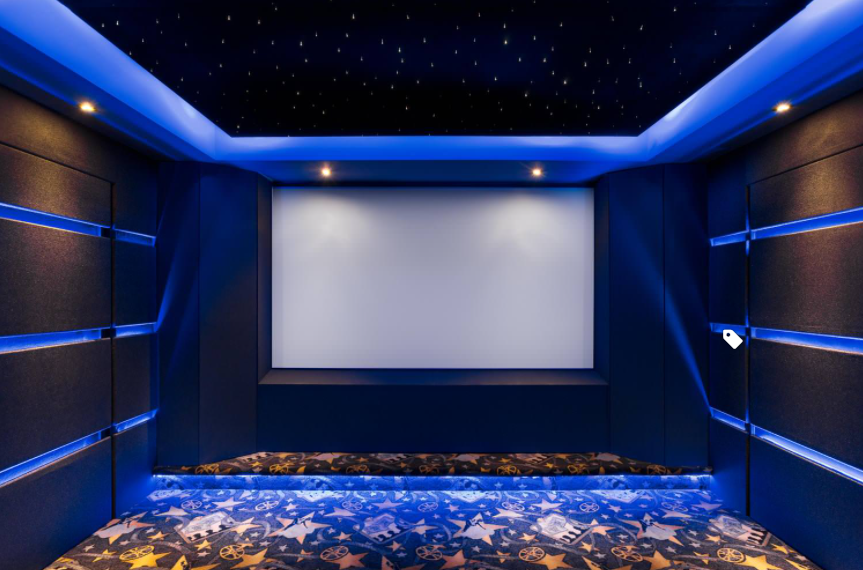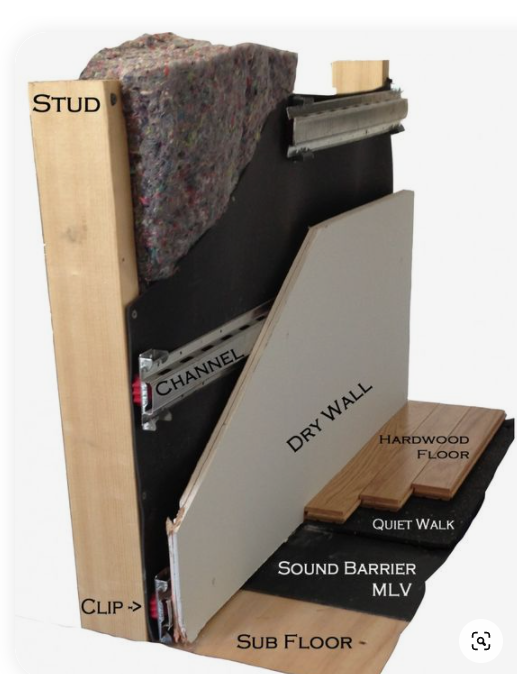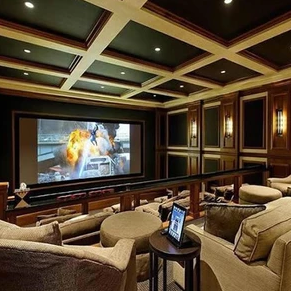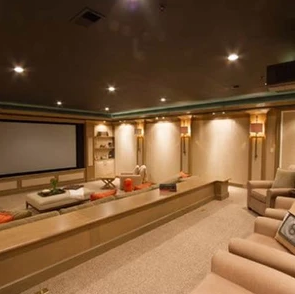Acoustic paneling
How Do Sound Insulating Panels Work?
Acoustic panels provide the perfect sound absorption materials for deadening and dampening sound in restaurants, offices and many more spaces. We have a number of sound insulating panel styles to choose from including standard fabric-wrapped panels, perforated wood and water resistant acoustic panels. What makes Soundproof Cow unique is that we do acoustic panels in style.
Some of our top-selling sound absorption products are art acoustic panels. Instead of a flat, single color, Soundproof Cow can produces art acoustic panels that are made to order, meaning you send us an image and we customize a one of a kind acoustic panel for you. It’s that easy. Just because you have to soundproof a space doesn’t mean it has to be boring. Check out the Soundproof Cow acoustic panels now.
LOOKING FOR A QUOTE ON YOUR ACOUSTIC PANEL SOLUTION? FILL OUT OUR PANEL QUOTE FORM
Soundproof Panels for Walls
Composed of compressed mineral wool or foam, sound absorbing acoustic panels absorb sound waves to reduce general noise, clarify speech and limit reverberation in walls within enclosed areas. Using acoustic panels essentially “cleans” an area of unnecessary sound debris that makes it impossible to hear a lecturer speak, enjoy beautiful music or record something as crisply as possible.
When sound waves travel through the air and strike wall- or ceiling-mounted noise reducing panels, fiberglass fibers or foam pores vibrate, increasing friction among the pores or fibers. These vibrations quickly reach a point where enough friction is created for the conversion of sound energy to kinetic (heat) energy, which is simply the energy of an object in motion. Since kinetic energy can’t be contained, it dissipates quickly, leaving no sound waves and, naturally, no sound.
Soundproofing panels block noise from entering or exiting a room. Each soundproof panel is heavy and dense, ensuring long-lasting quality. Plus, soundproofing panels are ideal in a variety of spaces, including:
- Auditoriums: With soundproofing panels, you can improve sound clarity in an auditorium by reducing background noise due to echoes, improving the audience’s experience.
- Condos: Condo soundproofing makes it simple to increase your privacy by minimizing the transmission of noise from one unit to another. In addition, soundproof panels may help you boost the value of your condo by offering a more private home than similar properties.
- Dance Studios: In many instances, dance studios will use soundproof panels to prevent sound from leaking into adjacent rooms, reduce echoing and improve music sound quality.
- Hotels: For hotels, it is paramount to provide guests with the best experience possible. Thanks to acoustic panel options, hotels can minimize the risk of noise complaints and boost their chances of providing a calm, restful stay to guests.
- Library: Library soundproofing represents a terrific option to decrease noise distractions by containing excess noise.
Thicker sound absorbing wall panels reflect, absorb and dissipate more sound waves. How many acoustic panels you have stationed within an enclosed area also influences the amount of sound reduction experienced in the room. To determine how many sound insulating panels you need to accommodate your needs, Soundproof Cow offers room analysis services to provide data regarding the number of panels necessary to absorb and convert sound waves.
Do Acoustic Panels and Noise Reduction Panels Both Block Noise?
Noise reducing and acoustic panels also control noise “junk” — like echoes, reverberation, muffling, etc. The best sound absorption panels are fabric-wrapped fiberglass panels, which offer superior noise control for a wide range of applications. They’re also available in a variety of sizes, colors and types to address your budgetary and design requirements.
Comparatively, sound absorbing panels tend to be lighter products. These panels may feel cushion-like to the touch and are capable of “softening” room surfaces. Also, sound-absorbing panels can be used to limit echoes in larger areas, such as banquet halls and gymnasiums.
The costs of soundproofing and sound absorbing panels may vary. HomeAdvisor points out the average cost to soundproof a room ranges from $1,068 to $2,632. This indicates the costs of a soundproofing project may add up quickly if you are not careful.
Regardless of whether you need soundproofing or sound-absorbing panels, it is important to consult with an acoustical panel specialist. By doing so, you can browse a large assortment of soundproofing and sound-absorbing panels for any application.

What Is the Difference Between Sound Insulating Panels and Sound Absorbing Wall Panels?
Some acoustic tiles are better at absorbing echoes within a room, some excel at stopping or blocking sound and others (called composite acoustic panels) do both.
Sound absorbing panels tend to be lighter products that may feel cushion-like to the touch. Capable of “softening” room surfaces, these panels suppress echoes in larger areas such as auditoriums, banquet halls and gymnasiums, so that everyone can understand speakers and enjoy musical events without straining to listen.
Understanding why rooms permit the echoing of sounds is comparable to a gym with walls 24 inches thick. Clapping your hands anywhere in this gym creates a distinct echo that takes a few seconds before dissipating. Imagine you’ve got access to 100 small rubber balls with super-bouncing properties. If you start throwing all these bouncy balls in all directions, they’ll bounce like crazy everywhere in the gym. Eventually, they’ll stop bouncing because they’ve used up their kinetic energy.
Now consider lining the gym’s walls and ceiling with sound absorbing panels and throwing those 100 bouncy balls the same way you threw them before installing acoustic panels. When the bouncy balls hit the walls and ceilings this time, they don’t bounce. And that’s because each ball’s energy (which you gave to the ball) is absorbed by the foam in the acoustic panels. Essentially, sound waves are super bouncy balls that bounce of hard surfaces but are absorbed by soft, absorbent surfaces.
Denser, heavier noise reduction panels provide sound blocking properties by decoupling walls so that one side of a wall does not present a hard, nonporous surface. Building more mass into any wall increases its ability to block sound.
Before deciding what kind of noise reduction panels you want, ask yourself these questions:
- Do I want to absorb echoes or block/reduce noise interference?
- What kind of surfaces and dimensions does the area present?
- What kind of sounds do I want to absorb/block/clarify?
- Is the area used more for speaking engagements, music shows or recording purposes? Is it a commercial-type area involving groups of people meeting, dining, etc?
What Types of Acoustic Panels Are Available?
Many types of acoustic panels are available, including art, fabric-wrapped and perforated acoustic. Which one is right for you depends on your individual needs.
1. Art Acoustic Panels
Art acoustic panels ensure you can soundproof a room without sacrificing your personal style. They can even be customized as needed. In fact, an acoustic panel specialist can help you can take your images and put them on a fabric-wrapped acoustic panel in rich, true-to-life colors using patented DyeFusion™ technology.
Ultimately, art acoustic panels represent a wonderful option in many spaces, such as:
- Auditoriums
- Bars and restaurants
- Conference rooms
- Gymnasiums
- Home and office spaces
- Hotels
- Libraries
- Museums
- Schools
- Studios
- Theaters
If you want to soundproof a space and go bold with your décor, there may be no better choice than art acoustic panels. An acoustic panel specialist can show you a vast array of colorful yet practical art acoustic panels, guaranteeing you should have no trouble minimizing noise and giving a room some artistic flare.
2. Fabric-Wrapped Panels
Fabric-wrapped panels deliver unprecedented acoustical performance. They come in many fabric wrap finishes, sizes and configurations to provide exceptional design potential.
With fabric-wrapped panels, you can reap the benefits of a professional-grade acoustic product. The panels can be mounted to a wall or ceiling with ease, ensuring you won’t have to worry about a time-consuming installation process. Moreover, fabric-wrapped panels are made to order, which means you can purchase top-notch panels for any space, at any time.
An acoustical panel specialist can teach you about the ins and outs of fabric-wrapped panels. This specialist will be happy to answer any of your questions about fabric-wrapped panels and other acoustic products.
3. Perforated Acoustic Wood Panels
Perforated acoustic wood panels reduce noise levels projected by speakers and musicians, and decrease sound reverberations within a building. The panels include dents to help absorb and centralize soundwaves and can be hung from ceilings to reduce noise levels and echoing.
Furthermore, perforated acoustic wood panels offer numerous benefits, including:
- Superior Sound Absorption: The panels quiet a space by absorbing and diffusing sound.
- Additional Privacy: The panels enable you to add privacy and intimacy to a space.
- Improved Sound Quality: The panels can help you boost listening and recording quality, along with speech intelligibility.
Checking out all of your acoustical panel options is essential to find the right panels for a commercial or residential project. Fortunately, acoustic panel specialists are available to help you take the guesswork out of discovering the perfect acoustical panels.
What Materials Are Used to Make Acoustic Panels?
Many materials are used to make acoustic panels, including:
1. Fabric
Typically, the best sound-absorption panels are fabric-wrapped fiberglass acoustic panels. These panels offer outstanding noise control for a wide range of applications and are sold in many sizes, colors and types to address your budgetary and design requirements.
Acoustic panels can be wrapped in thousands of different types of fabric. Meanwhile, the panels often consist of recycled fabric and are manufactured according to the highest standards on the market.
Many fabric-wrapped acoustic panels feature a Class A™ flammability rating and pass stringent building code requirements for exposed materials. To find out more about fabric-wrapped acoustic panels, be sure to consult with an acoustic specialist.
2. Foam
Acoustic foam prevents soundwaves from reflecting off ceilings, walls and other hard surfaces. The foam absorbs soundwaves to deliver a smooth, quiet and calm environment. Acoustic foam also enables you to reduce noises from outside sources and prevent them from seeping into a building.
Noise-dampening foam is not soundproof, but it allows you to enjoy many activities in residential and commercial spaces that wouldn’t be possible otherwise. It is fast and easy to install, and represents a budget-friendly option for many property owners.
3. Perforated Wood
Perforated wood acoustic panels remain a top choice for those who prioritize sustainability. The panels are constructed by master woodworkers using only sustainable, USA materials and have a Class A™ flammability rating.
Wood acoustic panels are available in many sizes, veneers, finishes and patterns, and enhance the style and ambience of any area with style, elegance and sophistication. They can be customized with your project pattern and ceiling- or wall-mounted or suspending from ceilings as a baffle or cloud.
What Benefits Does an Acoustic Panel Installation Provide?
An acoustic panel installation provides a number of benefits, such as:
1. More Welcoming Environment for Customers
For restaurant owners, you want customers to feel great the moment they enter your venue. But if there is excess noise inside your restaurant, customers may feel distracted. As a result, customers may be dissatisfied with the overall dining experience.
Believe it or not, soundproofing may dictate a restaurant’s immediate and long-term success. For example, a restaurant owner who goes above and beyond the call of duty to minimize noise can create a pleasant experience for diners. With soundproofing materials in place, the restaurant wait staff should have no trouble hearing customer requests and responding to them immediately.
At the same time, customers will be able to chat with one another, enjoy the restaurant’s ambiance and spend an extended period of time at the venue. This may lead customers to purchase additional drinks and desserts as well as boost a restaurant’s reputation and revenues.

It also is important to note noise may impact how diners view their food. BioMedCentral reported a recent study ranked noise as the second most common complaint among diners. The study showed excess noise may impact diners in several ways:
- Affects the way a diner perceives a meal’s aroma
- Lessens the ability to discern sweet foods
- Decreases the enjoyment of the food’s taste
The study indicated many food critics now review a restaurant’s food quality and noise levels. This shows that excess noise can cause serious damage to a restaurant and over time, may prevent restaurant owners from maximizing their revenues.
Allocating the necessary time and resources to soundproof a restaurant could prove to be mutually beneficial for restaurant owners and customers. Thanks to soundproof panels, restaurant owners can spend less time worrying about excess noise and more time focusing on what’s important — providing customers with an unforgettable dining experience.
2. Boosted Productivity in an Office
An office is a shared workspace. This space should foster collaboration, but in some cases, excess noise may prevent office workers from completing day-to-day tasks.
For instance, excess noise may make it tough for an employee to stay focused during customer calls. Or, if a conference room is not private enough, information about confidential business deals and other business matters could leak to employees throughout an office.
Office soundproofing enables you to provide a better work environment for employees. It ensures you can decrease noise distractions, leading to increased employee productivity and efficiency. Office soundproofing also allows you to keep conference rooms and other areas private to further safeguard your confidential business information.
Soundproofing delivers immense value in office spaces, and meeting with an acoustic specialist ensures you can get the support you need to soundproof an office.
3. Better Acoustical Quality in Music Venues
Getting the best acoustics possible is vital in music rooms. Thankfully, music room soundproofing enables you to move one step closer to transforming your dream of becoming a famous musician into reality.
Music room soundproofing allows you to soundproof your space. Therefore, you’ll be able to practice playing music without disturbing others, as well as produce the highest-quality sound possible.
For those who want to reduce distractions and ensure they can let their creative juices run wild, music room soundproofing is exceedingly valuable. With music room soundproofing, you can get the privacy you need to build your music skill set.
4. Improved Workplace Safety
As a business owner, you may store engines, generators and other loud machinery in an equipment room. Unfortunately, equipment room noise can be troublesome, particularly for workers who need to communicate with one another to ensure day-to-day tasks are completed safely and efficiently.
Equipment room soundproofing may prove to be a safe, effective and cost-saving option for your business. It allows you to minimize noise and create a secure work environment. This means you can eliminate distractions and make it easy for employees to collaborate with each other, leading to improved employee communication.
Also, with equipment room soundproofing, your business may be able to limit the risk of accidents caused by poor communications. Equipment room soundproofing enables workers to maintain consistent communications with one another, which can help your business create a safe work environment and lower costs associated with workplace accidents.
5. Increased Workshop Freedom
A workshop may serve as a place where you can complete personal projects any time you choose. Workshop soundproofing enables you to enhance the quality of your workshop by reducing noise distractions and complaints.
Workshop soundproofing materials provide you with the freedom to complete tasks in your workshop at your convenience. The materials allow you to minimize noise distractions so you can boost your productivity. They also enable you to prevent noise from escaping your workshop, eliminating the risk of noise complaints from neighbors.
If you ever have questions about whether workshop soundproofing is right for you, acoustic specialists can help. These specialists boast comprehensive acoustic panel expertise and are happy to share their soundproofing panel knowledge and insights with you.
Key Acoustic Panel Questions to Consider
Assessing your acoustic panel needs can be difficult. If you consider the following questions, you can streamline your search for the right acoustic panels for your business or home.
1. What Type of Acoustic Product Do You Need?
Every space is different, so be sure to consider your end goals before you purchase an acoustic product. If you’re looking to stop noise from moving from one space to the next, soundproofing products are ideal. Or if you need acoustic products to prevent sound from entering or exiting a room, sound-absorbing products offer long-lasting value.
2. What or Where Are You Trying to Soundproof?
Determine exactly what or where you need to soundproof. This will allow you to assess a space or room and plan accordingly. Or, if you are trying to minimize equipment noise, determine which types of equipment you need to soundproof.
3. How Can You Install Acoustic Panels?
Acoustic panel installation can be fast and simple, particularly for those who work with an acoustic specialist. This professional will offer acoustic panel recommendations based on the application and outline each step of the installation process to ensure you can make an informed decision.



